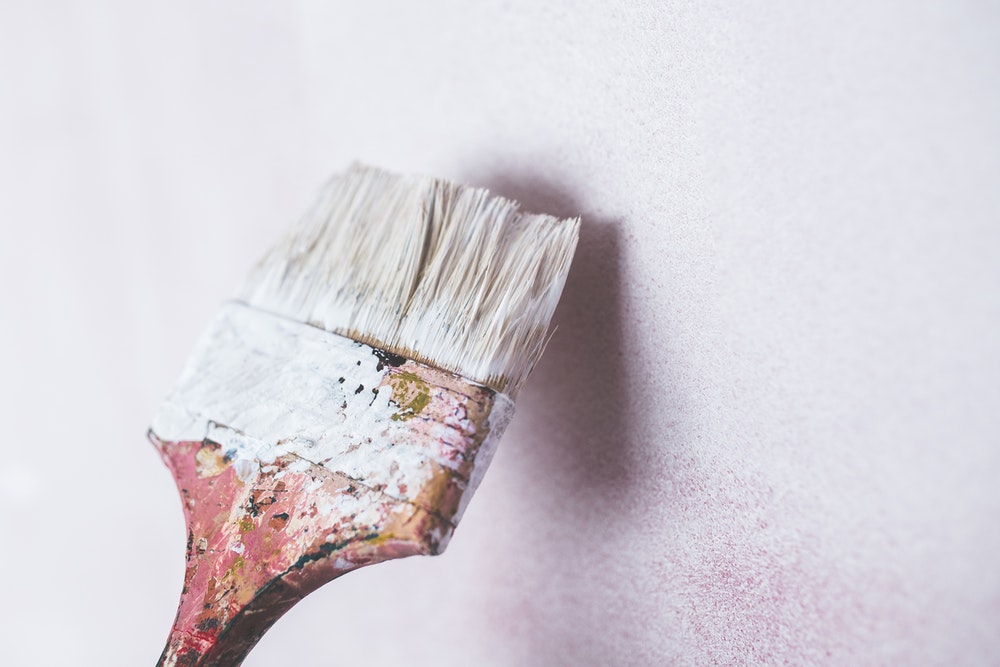It is hard to believe that painting an interior wall is a simple process. You can finish this project in just a few hours, even if you are a novice! This article will detail seven steps for painting interior walls. The first step is choosing the right paint for your home. The second step is determining your texture preference.
The third step is figuring out how to prepare the surface of your home for painting. The fourth step is preparing the paint and roller set up. The fifth step is starting with one wall at a time, and the sixth step is finishing off with two walls at a time. The seventh and final step shows you how to clean up from getting paint on other surfaces of your home.
Paint Interior Walls: 7 Simple Steps for Painting Your Home
Paint interior walls with these seven simple steps.
1. Choosing the right paint for your home
2. Determining your texture preference
3. Figuring out how to prepare the surface of your home for painting
4. Preparing the paint and roller set up
5. Starting with one wall at a time, finishing off with two walls at a time
6. Cleaning up from getting paint on other surfaces of your home
Paint Interior Walls: Tips for Choosing the Right Paint
When deciding on what paint to use, there are four main factors to consider.
1. Odorless paint
2. Paint that is easy to clean-up
3. Paint that is made for interior walls
4. Paint that has low VOCs
The trick is to find the perfect combination of these four factors that works best for your home.
Paint Interior Walls: Tips for Preparing Your Surface
Many people have an idea of what paint they want to use, but they don’t know how to prepare their surface for painting. If you have drywall, you need to be careful not to damage the surface. The best way to avoid damaging drywall is by lightly sanding it with a drywall sander and then wiping away the dust with a tack cloth before painting. You should also clean the area around your windows prior to painting them.
If you are using wallpaper or another type of paper instead of drywall, you’ll need to remove it carefully so that there are no tears or holes in the paper after painting. You will want to clean up any excess tack cloths used as well.
Paint Interior Walls: How to Prepare a Roller Set Up
Preparing the paint and roller set up is a core step in this process.
The first thing to do is prepare a roller set up for painting that includes two paint brushes, two short-handled rollers, one long-handled roller, and a bucket with lid. The brushes should be able to hold at least three cups of paint each; the rollers should be about 12 inches wide. For this project, you will need a gallon of paint. If you are not sure of the amount you need, buy more than what you think you’ll need so that you can use it later on another project.
Next, make sure your work space is clean and ready for painting by removing any dirt or debris. You may also want to remove any furniture in the room before starting because it could get in the way of painting if it’s not removed beforehand.
Paint Interior Walls: Tips for One Wall at a Time
If you are painting just one wall at a time, the most important tip is to prepare the surface of your wall. This means that you should remove any objects from the surface of your wall. You do not want anything on your walls when you paint them, because it might get covered up by paint and make your project more difficult. If there are things on your wall that cannot be removed, you can use painter’s tape to cover them up and create a fresh canvas for painting.
Paint Interior Walls, Step by Step
Step 1: Choose the Right Paint for Your Home
The first step in painting an interior wall is choosing the right paint for your home. There are many different types of paint available. For example, oil-based paints are better for a textured surface and are used on walls with a lot of texture.
The second type of paint is latex paint, which is great if you want to save money and choose a less toxic option. The third type of paint is water-based paint, which is good for fresh walls or surfaces that have a lot of moisture in them like bathrooms or kitchens.
Clean, Clean, Clean
You will need to prepare the surface of your home for painting by cleaning it. You will be able to see where you have painted and where you haven’t with a mirror or window. It is important that you clean before starting so you don’t get paint on other surfaces.







